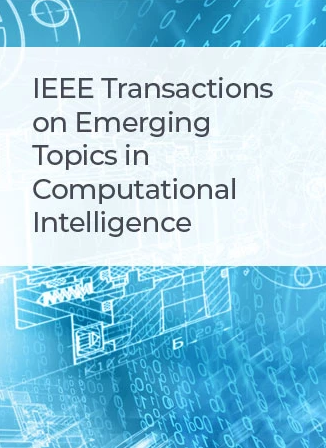混合 IRS 辅助安全卫星下行链路通信:快速深度强化学习方法
IF 5.3
3区 计算机科学
Q1 COMPUTER SCIENCE, ARTIFICIAL INTELLIGENCE
IEEE Transactions on Emerging Topics in Computational Intelligence
Pub Date : 2024-03-28
DOI:10.1109/TETCI.2024.3378605
引用次数: 0
摘要
本文研究了一种带有混合智能反射面(IRS)的安全卫星下行链路通信系统。考虑到过时信道状态信息和 IRS 功耗的实用模型,提出了卫星和 IRS 联合波束成形的稳健设计问题,以最大化系统的最坏情况保密率。我们利用深度强化学习(DRL)来解决这个问题,提出了一种快速 DRL 算法,即深度决策后状态决定策略梯度(DPDS-DPG)算法。在 DPDS-DPG 中,通过将 PDS 概念融入传统的深度 DPG(DDPG)算法,利用了事先已知的系统动态,从而实现了更快的学习收敛。仿真结果表明,与 DDPG 相比,DPDS-DPG 的学习收敛速度提高了 50%,可实现的系统保密率相当。此外,结果表明,采用主动 IRS 和混合 IRS 时,系统保密率分别比传统的被动 IRS 提高了 52% 和 35%,从而支持了安全通信。本文章由计算机程序翻译,如有差异,请以英文原文为准。
Hybrid IRS-Assisted Secure Satellite Downlink Communications: A Fast Deep Reinforcement Learning Approach
This paper considers a secure satellite downlink communication system with a hybrid intelligent reflecting surface (IRS). A robust design problem for the satellite and IRS joint beamforming is formulated to maximize the system's worst-case secrecy rate, considering practical models of the outdated channel state information and IRS power consumption. We leverage deep reinforcement learning (DRL) to solve the problem by proposing a fast DRL algorithm, namely the deep post-decision state–deterministic policy gradient (DPDS-DPG) algorithm. In DPDS-DPG, the prior known system dynamics are exploited by integrating the PDS concept into the traditional deep DPG (DDPG) algorithm, resulting in faster learning convergence. Simulation results show a faster learning convergence of 50% for DPDS-DPG compared to DDPG, with a comparable achievable system secrecy rate. Additionally, the results demonstrate system secrecy rate gains of 52% and 35% when employing active IRS and hybrid IRS, respectively, over conventional passive IRS, thereby supporting secure communications.
求助全文
通过发布文献求助,成功后即可免费获取论文全文。
去求助
来源期刊

IEEE Transactions on Emerging Topics in Computational Intelligence
Mathematics-Control and Optimization
CiteScore
10.30
自引率
7.50%
发文量
147
期刊介绍:
The IEEE Transactions on Emerging Topics in Computational Intelligence (TETCI) publishes original articles on emerging aspects of computational intelligence, including theory, applications, and surveys.
TETCI is an electronics only publication. TETCI publishes six issues per year.
Authors are encouraged to submit manuscripts in any emerging topic in computational intelligence, especially nature-inspired computing topics not covered by other IEEE Computational Intelligence Society journals. A few such illustrative examples are glial cell networks, computational neuroscience, Brain Computer Interface, ambient intelligence, non-fuzzy computing with words, artificial life, cultural learning, artificial endocrine networks, social reasoning, artificial hormone networks, computational intelligence for the IoT and Smart-X technologies.
 求助内容:
求助内容: 应助结果提醒方式:
应助结果提醒方式:


